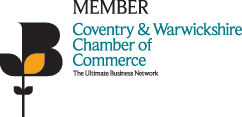What Is a 404 Error?
Have you ever followed a satnav, only to find the road no longer exists? That’s exactly what happens when a visitor clicks a broken link and is met with a 404 error—a dead end.
A 404 error is an HTTP status code that tells the browser that the requested page cannot be found on the server. It falls under client-side errors (4xx series), meaning the issue is typically with the website itself, rather than the server.
At Bemunchie Online, we help UK businesses keep their websites error-free. Frequent 404 errors can:
- Frustrate users – Visitors encountering errors are more likely to leave.
- Hurt SEO rankings – Google reduces the ranking of sites with too many broken pages.
- Reduce conversions – Customers won’t buy from a site with non-functional pages.
This guide explains why page not found errors occur, how to fix them, and how to prevent them in the future.
Struggling with broken pages? Contact Bemunchie Online for a free website audit!
Why Is It Called a 404 Error?
Web browsers use HTTP status codes to communicate what happens when a user requests a page. Some common codes include:
- 200 OK – Page loads successfully.
- 301 Moved Permanently – The page has moved to a new URL.
- 403 Forbidden – The user doesn’t have permission to access the page.
- 500 Internal Server Error – A problem exists on the website’s server.
- 404 Not Found – The page is missing.
The number 404 was randomly assigned by early web developers at CERN, and it has remained the standard for missing pages ever since.
Types of 404 Errors: Hard vs Soft 404s
Not all missing page errors are the same. Google differentiates between:
Hard 404 Errors
A hard 404 error means the page does not exist, and the server correctly returns a 404 status code.
✅ Good for SEO because Google stops indexing the missing page.
Soft 404 Errors
A soft 404 error occurs when a page returns a “200 OK” status but still displays an error message.
❌ Bad for SEO because Google keeps crawling the page, wasting crawl budget.
What Causes a 404 Error?
- Broken Links – Internal or external links pointing to deleted pages.
- Deleted or Moved Pages – Pages removed without proper redirection.
- Misspelled URLs – Even minor typos cause missing page errors.
- Website Redesigns & Migrations – URL structures change, breaking old links.
- Expired Domains – If a business changes its domain, old URLs may stop working.
Case Study: UK Government Websites
In 2022, outdated links on Gov.uk led users to missing pages, causing frustration. Their solution? Automated link audits and structured URL planning.
How to Detect 404 Errors on Your Website
Best Tools for Finding 404 Errors:
- Google Search Console – Reports broken URLs.
- Google Analytics – Tracks users landing on 404 pages.
- Website Crawlers (Screaming Frog, Ahrefs, SEMrush) – Scans your site for broken links.
- 404 Monitoring Plugins – WordPress (Redirection, Broken Link Checker) and Shopify (SEO Manager).
How 404 Errors Impact SEO and Crawl Budget
What Is Crawl Budget?
Google allocates a crawl budget to each website, limiting how many pages it will scan in a session. Think of Google’s crawl budget like a supermarket delivery service—if they keep stopping at the wrong addresses (404s), they’ll have less time for the important deliveries (your actual content).
How 404 Errors Waste Crawl Budget
If Google spends time crawling broken pages, it may ignore new content, harming SEO rankings.
Solution: Redirect important broken pages with 301 redirects and update sitemaps.
How to Fix a 404 Error
Quick Fix Checklist:
Step 1: Identify broken links using Google Search Console.
Step 2: Set up a 301 redirect if the page has moved.
Step 3: Restore missing pages from backups if needed.
Step 4: Update internal links in menus, blogs, and navigation.
Step 5: Resubmit the updated sitemap to Google.
Step 6: Improve the page not found page design to keep users engaged.
How to Use Humour on a 404 Page (With Examples)
UK companies use engaging 404 pages to retain visitors:
✅ Lego – Uses a witty “Oh Bricks”

✅ NASA – Shows a Black hole!

✅ Amazon – Shows you one of their famous dogs.

✅ Ebay – Has a funny “We looked everywhere”.

Preventing Future 404 Errors
Structured URL Planning & Canonical Tags
- Use simple, logical URLs (e.g., /services/web-design/ instead of /webdsgn001).
- Canonical tags tell Google which version of a page to prioritise, avoiding duplicate content issues.
Technical Terms Explained
Client-Side Error (4xx Series)
A client-side error occurs when the issue originates from the user’s request rather than the server itself. The 4xx HTTP status codes indicate problems such as:
- 400 Bad Request – The server cannot process the request due to incorrect syntax.
- 403 Forbidden – The user does not have permission to access the resource.
- 404 Not Found – The requested page does not exist or has been removed.
In contrast, 5xx errors (server-side errors) occur due to issues with the website’s hosting or server configuration.
404 Error (Page Not Found)
A 404 error means the requested webpage does not exist on the server. This may occur due to:
- The page being deleted or moved without a redirect.
- A misspelled URL.
- A broken link pointing to an incorrect or outdated page.
Soft 404 Error
A soft 404 error occurs when a webpage returns a “200 OK” status but still displays an error message, misleading search engines into thinking the page exists.
Google considers soft 404s a waste of crawl budget because it continues to index pages that provide no real value. Fix soft 404s by:
- Setting up a proper 404 status code for missing pages.
- Redirecting users to a relevant page with a 301 redirect if necessary.
Hard 404 Error
A hard 404 error is a true 404 error where the server correctly informs users and search engines that the page does not exist. This is the preferred behaviour when a page has been permanently deleted without a replacement.
Crawl Budget
A crawl budget refers to the number of pages Google is willing to crawl on a website within a given timeframe.
404 errors waste crawl budget because search engines spend resources trying to index non-existent pages instead of prioritising important content. To manage crawl budget effectively:
- Fix broken links to reduce unnecessary crawling.
- Use redirects wisely to guide search engines to the correct content.
- Block unimportant pages from being crawled using robots.txt.
301 Redirect (Permanent Redirect)
A 301 redirect is a permanent redirection from one URL to another. It ensures that:
- Users and search engines are automatically taken to the new page.
- SEO rankings and link equity (authority from backlinks) are transferred to the new page.
For example, if example.com/old-page is no longer needed, a 301 redirect can send traffic to example.com/new-page instead.
302 Redirect (Temporary Redirect)
A 302 redirect is a temporary redirection that tells search engines the move is not permanent. Unlike a 301 redirect, a 302 does not pass SEO value, making it useful only for short-term page movements.
Canonical Tag
A canonical tag (rel=”canonical”) tells search engines which version of a page is the primary URL when multiple similar pages exist. This prevents duplicate content issues that can confuse Google and dilute SEO rankings.
Example:
If these URLs all display the same content:
- example.com/shoes
- example.com/shoes?utm_source=google
- example.com/category/shoes
A canonical tag on each page can point to example.com/shoes as the main version, ensuring search engines only index one.
Structured URL Planning
Well-structured URLs improve:
- SEO – Clean URLs are easier to rank in search engines.
- User Experience – Clear and logical URLs help navigation.
Best practice example:
- Good URL: example.com/services/web-design
- Bad URL: example.com/svcs?id=1234&web-design=true
Google Search Console
Google Search Console (GSC) is a free tool that helps webmasters monitor website health, including:
- Detecting 404 errors.
- Submitting sitemaps to ensure pages are properly indexed.
- Monitoring SEO performance and mobile usability issues.
Sitemaps (XML Sitemaps)
A sitemap is a file that lists all the important pages on a website, helping search engines discover content.
To fix page not found errors, update and submit your sitemap to Google Search Console whenever pages are added or removed.
404 Monitoring Plugins (WordPress & Shopify)
For automated 404 detection and redirection, consider these plugins:
WordPress:
- Redirection – Tracks 404 errors and allows easy 301 redirects.
- Broken Link Checker – Finds and alerts you of broken links.
Shopify:
- SEO Manager – Identifies 404 pages and allows redirection.
- Broken Link 404/301 Redirect Manager – Automatically redirects broken links.
DNS (Domain Name System) and How It Affects 404 Errors
The DNS (Domain Name System) translates a website’s name into an IP address (e.g., example.com → 192.168.1.1).
If DNS settings are misconfigured, a website may show 404 errors or fail to load entirely. To prevent this:
- Ensure DNS records are correctly set up when switching domains.
- Clear the DNS cache if a site shows persistent 404 errors after an update.
Robots.txt and Noindex Tags
- Robots.txt – A file that tells search engines which pages not to crawl.
- Noindex Tags – HTML tags that tell Google not to index specific pages.
Using these incorrectly can cause unwanted 404 errors by preventing important pages from appearing in search results.
Conclusion
A 404 error is like walking into a shop only to find the shelves empty. Keep your website in top shape by fixing errors quickly.
Need expert help? Contact Bemunchie Online for a free website audit today!








